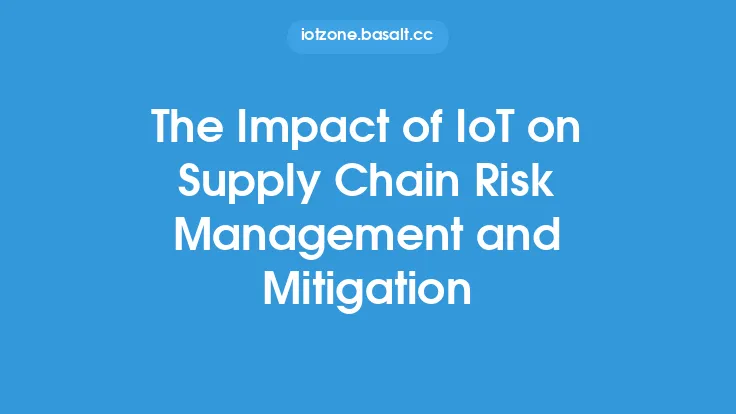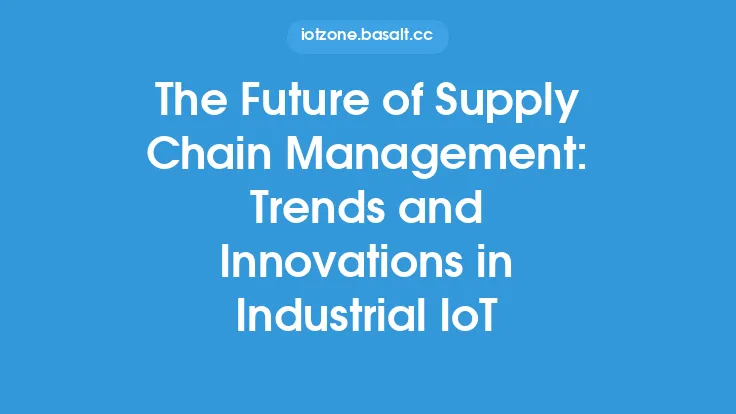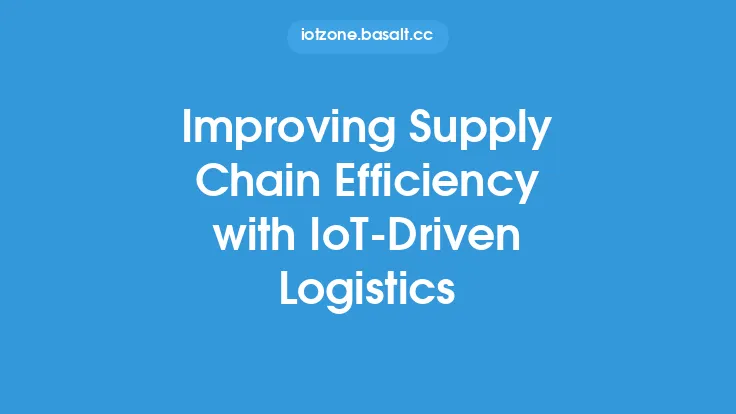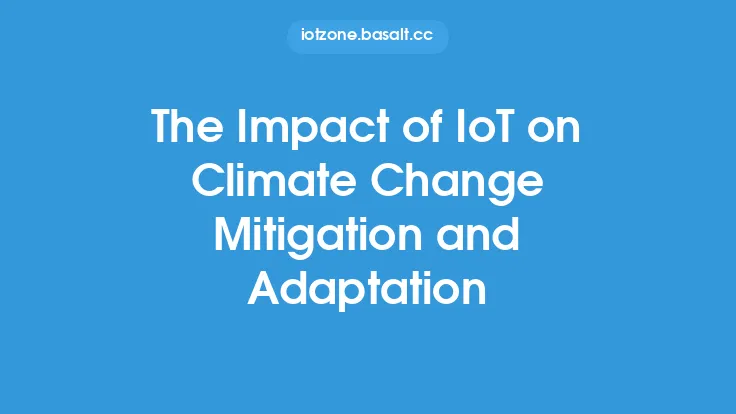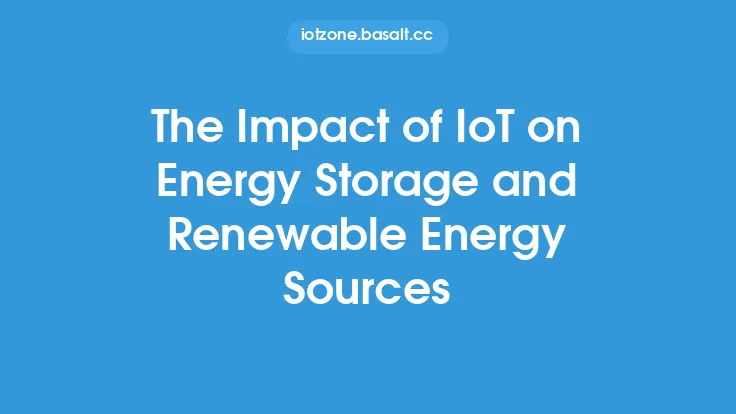The farm-to-table supply chain is a complex network of processes that involve the production, processing, distribution, and delivery of agricultural products to consumers. The efficiency of this supply chain is crucial in ensuring that fresh and high-quality products reach the consumers in a timely and cost-effective manner. The Internet of Things (IoT) has been increasingly adopted in the agricultural sector to improve the efficiency of the farm-to-table supply chain. By leveraging IoT technologies, farmers, suppliers, and distributors can optimize their operations, reduce costs, and improve the quality of their products.
Introduction to IoT in Farm-to-Table Supply Chain
IoT in the farm-to-table supply chain involves the use of sensors, actuators, and other devices to collect and exchange data in real-time. This data can be used to monitor and control various aspects of the supply chain, such as temperature, humidity, and inventory levels. IoT devices can be installed in farms, warehouses, transportation vehicles, and retail stores to track the movement and condition of products throughout the supply chain. The use of IoT in the farm-to-table supply chain can help to improve efficiency, reduce waste, and enhance the overall quality of products.
Benefits of IoT in Farm-to-Table Supply Chain
The adoption of IoT in the farm-to-table supply chain can bring numerous benefits to farmers, suppliers, and distributors. Some of the key benefits include:
- Improved inventory management: IoT devices can be used to track inventory levels in real-time, enabling farmers and suppliers to optimize their production and distribution plans.
- Enhanced quality control: IoT sensors can be used to monitor the condition of products throughout the supply chain, enabling farmers and suppliers to identify and address any quality issues promptly.
- Reduced waste: IoT devices can be used to track the movement and condition of products, enabling farmers and suppliers to reduce waste and minimize losses.
- Increased transparency: IoT devices can be used to provide real-time tracking and monitoring of products, enabling consumers to access information about the origin, quality, and movement of their food.
- Improved food safety: IoT sensors can be used to monitor the temperature and humidity of products, enabling farmers and suppliers to ensure that their products are handled and stored safely.
IoT Technologies Used in Farm-to-Table Supply Chain
Several IoT technologies are used in the farm-to-table supply chain, including:
- Radio Frequency Identification (RFID) tags: These tags can be used to track the movement and condition of products throughout the supply chain.
- Global Positioning System (GPS) tracking: This technology can be used to track the location and movement of products in real-time.
- Sensors: These devices can be used to monitor temperature, humidity, and other environmental factors that can affect the quality of products.
- Actuators: These devices can be used to control various aspects of the supply chain, such as temperature and humidity levels.
- Cloud-based platforms: These platforms can be used to collect, analyze, and disseminate data from IoT devices, enabling farmers and suppliers to make informed decisions.
Implementation of IoT in Farm-to-Table Supply Chain
The implementation of IoT in the farm-to-table supply chain involves several steps, including:
- Assessment of current operations: Farmers and suppliers need to assess their current operations to identify areas where IoT can be used to improve efficiency and quality.
- Selection of IoT devices: Farmers and suppliers need to select the appropriate IoT devices and technologies to meet their specific needs.
- Installation and integration: IoT devices need to be installed and integrated with existing systems and infrastructure.
- Data analysis and interpretation: Farmers and suppliers need to analyze and interpret data from IoT devices to make informed decisions.
- Training and support: Farmers and suppliers need to provide training and support to their staff to ensure that they can effectively use IoT technologies.
Challenges and Limitations of IoT in Farm-to-Table Supply Chain
Despite the benefits of IoT in the farm-to-table supply chain, there are several challenges and limitations that need to be addressed, including:
- High upfront costs: The adoption of IoT technologies can require significant upfront investments in hardware, software, and infrastructure.
- Complexity: IoT systems can be complex and require specialized expertise to install, integrate, and maintain.
- Data management: IoT devices can generate vast amounts of data, which can be challenging to manage and analyze.
- Security: IoT devices can be vulnerable to cyber threats, which can compromise the security of the supply chain.
- Interoperability: IoT devices from different manufacturers may not be compatible, which can limit their effectiveness.
Future of IoT in Farm-to-Table Supply Chain
The future of IoT in the farm-to-table supply chain is promising, with several trends and technologies expected to shape the industry, including:
- Increased adoption of cloud-based platforms: Cloud-based platforms are expected to play a key role in the collection, analysis, and dissemination of data from IoT devices.
- Growing use of artificial intelligence and machine learning: Artificial intelligence and machine learning are expected to be used to analyze data from IoT devices and make predictions about supply chain operations.
- Increased focus on security: As IoT devices become more widespread, there will be an increased focus on security to protect the supply chain from cyber threats.
- Greater emphasis on interoperability: There will be a greater emphasis on ensuring that IoT devices from different manufacturers are compatible and can communicate effectively.
- Expanded use of IoT in emerging markets: IoT is expected to be adopted in emerging markets, where it can help to improve the efficiency and quality of supply chain operations.

